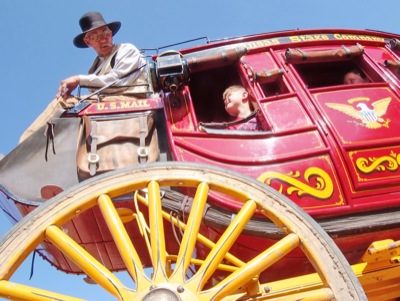
By Steve Crecelius, courtesy Go Wichita CVB
In June, Greg Eckhart, tourism sales manager for Travel Portland, attended the annual TAP Dance meeting of Travel Alliance Partners in Louisville, Ky., where he and three other members of the Oregon tourism industry had intensive meetings with tour operators.
In preparation for the meeting, Eckhart, working with the Newport Chamber of Commerce, the Elizabeth Street Inn and Travel Oregon, developed a suggested itinerary that covered Portland and the Oregon coast.
“We pitched it to the operators at that conference,” said Eckhart.
At the suggestion of a group planner, the Des Moines, Iowa, Convention and Visitors Bureau recently created three new itineraries for 21 and Over Tours, which are geared toward the 25-35 age market.
“We want to stay on top of the industry with new ideas,” said Katie Stien, sales manager for the CVB. “We are trying to stay new and fresh.”
Century-old theme
Wendy Dobrzynski, group tour manager for Visit Milwaukee, recently launched a Century-Old Milwaukee group itinerary, on which everything is more than 100 years old.
“We can fill in a lot of newer things that are actually old that they haven’t been to or put a new spin on things they have been to in the past,” said Dobrzynski.
Suggested itineraries such as those in Portland, Des Moines and Milwaukee are an important part of convention and visitors bureaus’ group marketing efforts.
“As we roll out new pitches, that is where we start. It is the initial step in introducing an operator or group leader to new options and experiences. It is a critical part of what we do,” said Eckhart
“They are extremely important,” said Jan Hiebert, senior tourism sales and services manager for the Greater Wichita Convention and Visitors Bureau. “Even though they may not totally fit what they are looking for, it gives an idea of what is available and shows we are familiar with our product and are able to put it together in a cohesive manner.”
“They work well as a way to plant a seed of what is new,” said Brian Cheek, tourism sales manager for Experience Columbus in Ohio. “It gives them [planners] ideas of something they have not thought of, new ideas or ways to repackage existing itineraries. It is a strong marketing tool in that regard.”
“They are very important,” said Jeanne Toth, sales manager for the Albany County Convention and Visitors Bureau in New York. “Once you talk with a tour company and see what kind of groups they work with, whether it’s seniors, baby boomers or youth, you have something to give them for them to be able to see the flow and all the things you have.”
“We want to make everything easier for the planner,” said Stien. “We want them to have everything possible at the tip of their fingers.”
CVBs take different approaches to displaying suggested group itineraries. Some provide detailed descriptions of attractions; others are listings of attractions with minimal verbiage. Some have specific times; others don’t. Some have contact information; others don’t.
Puzzle that works
The one thing all must be is workable.
“They have to actually work,” said Hiebert. “They have to have a nice flow. I try to have something that is logical. It has to all work like a puzzle that fits together.”
“We try to make sure they are logical,” said Cheek. “We keep things in a logical flow around town and what is logical to do in a day.”
“I put myself in their shoes,” said Stien, “especially the timing. I have a good perception of how long it takes a bus to get from one place to another. It takes longer than a car. It is different with groups.”










